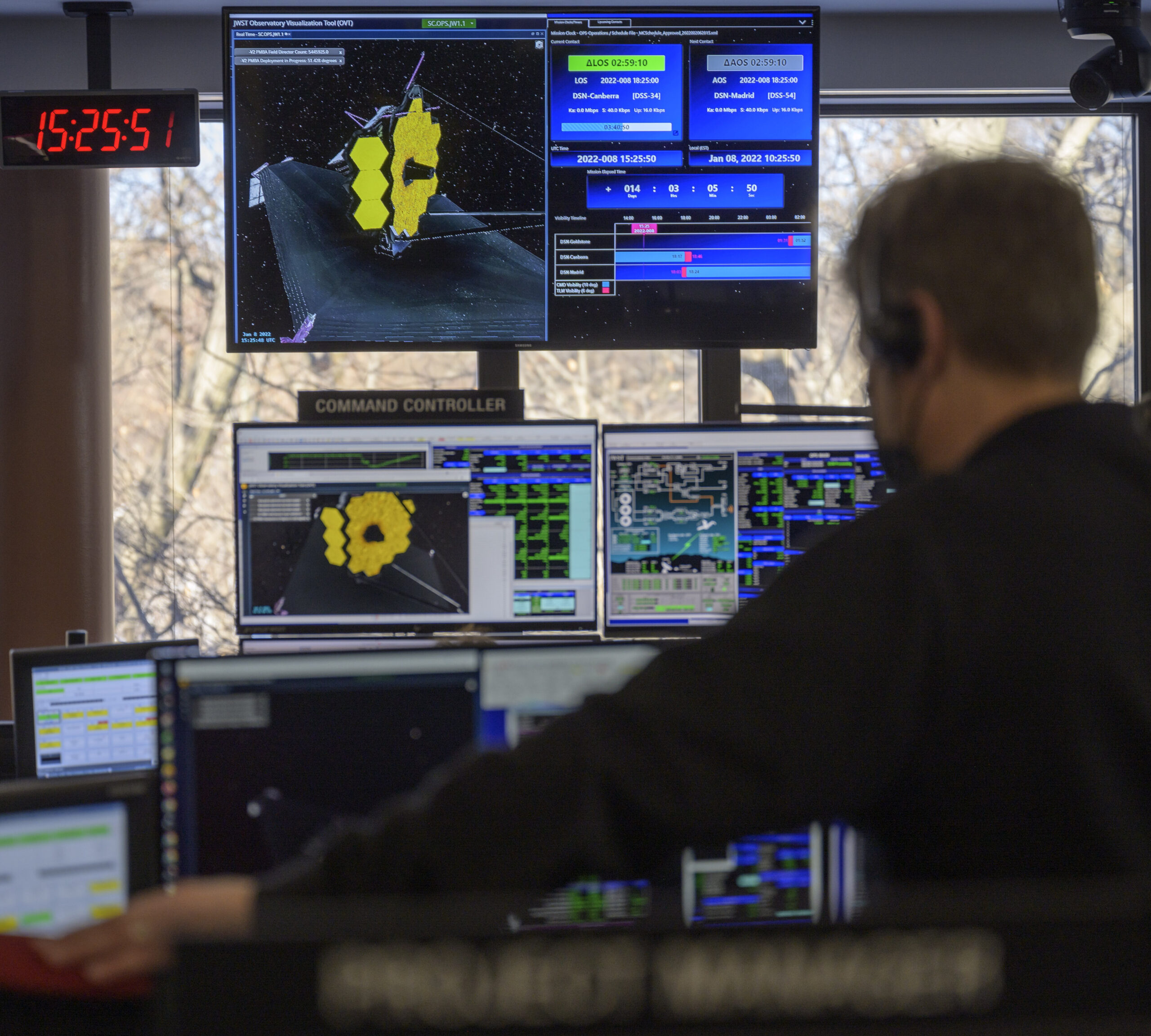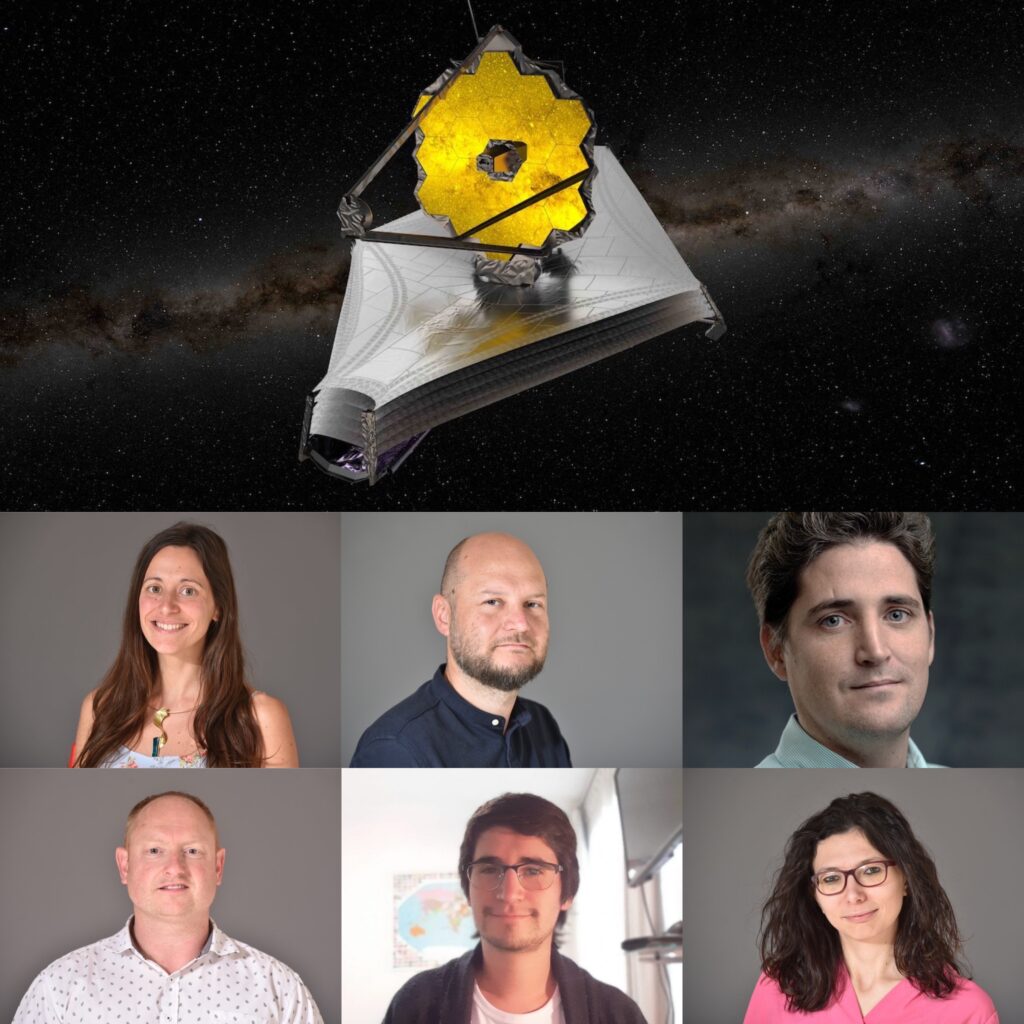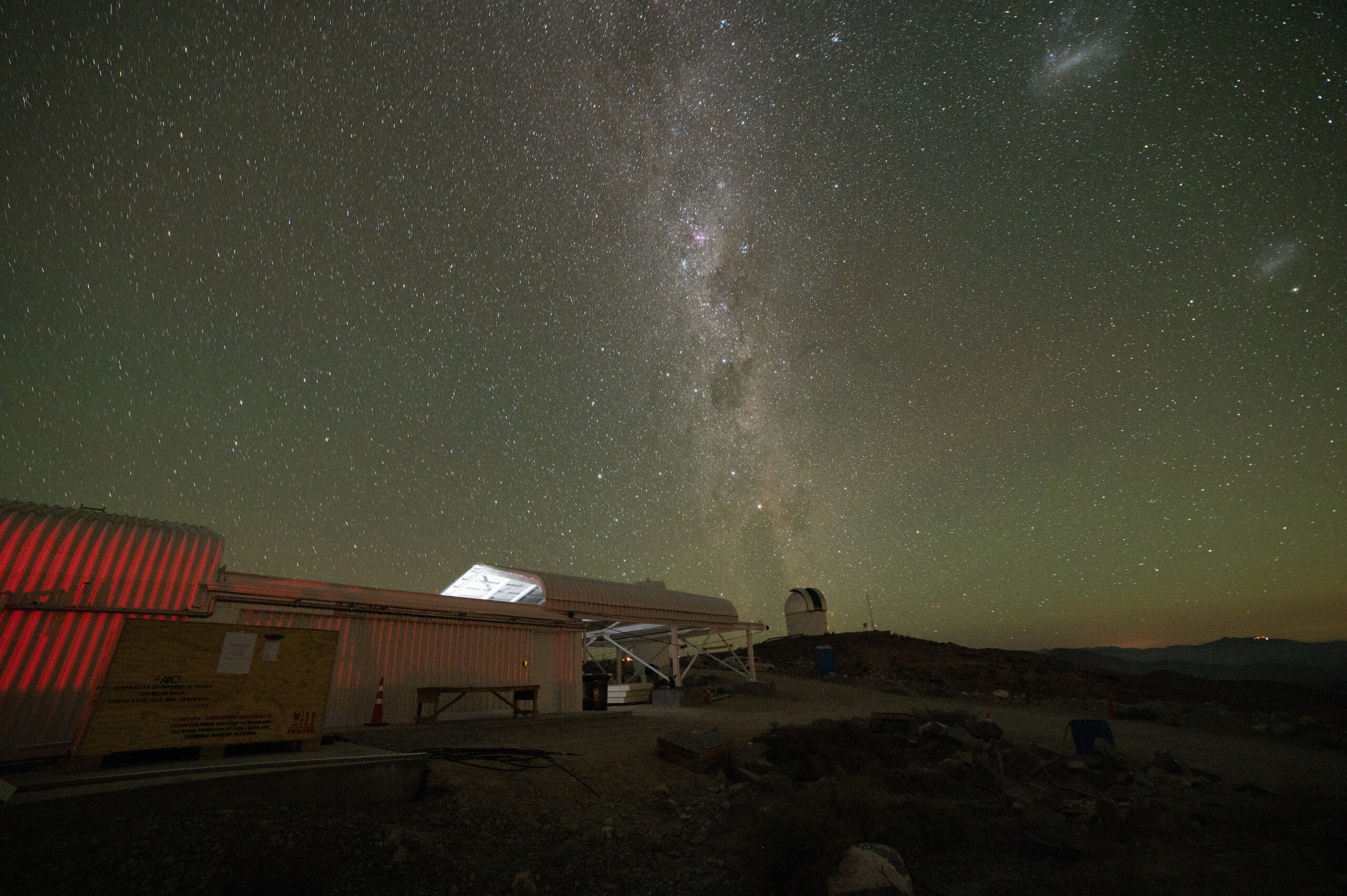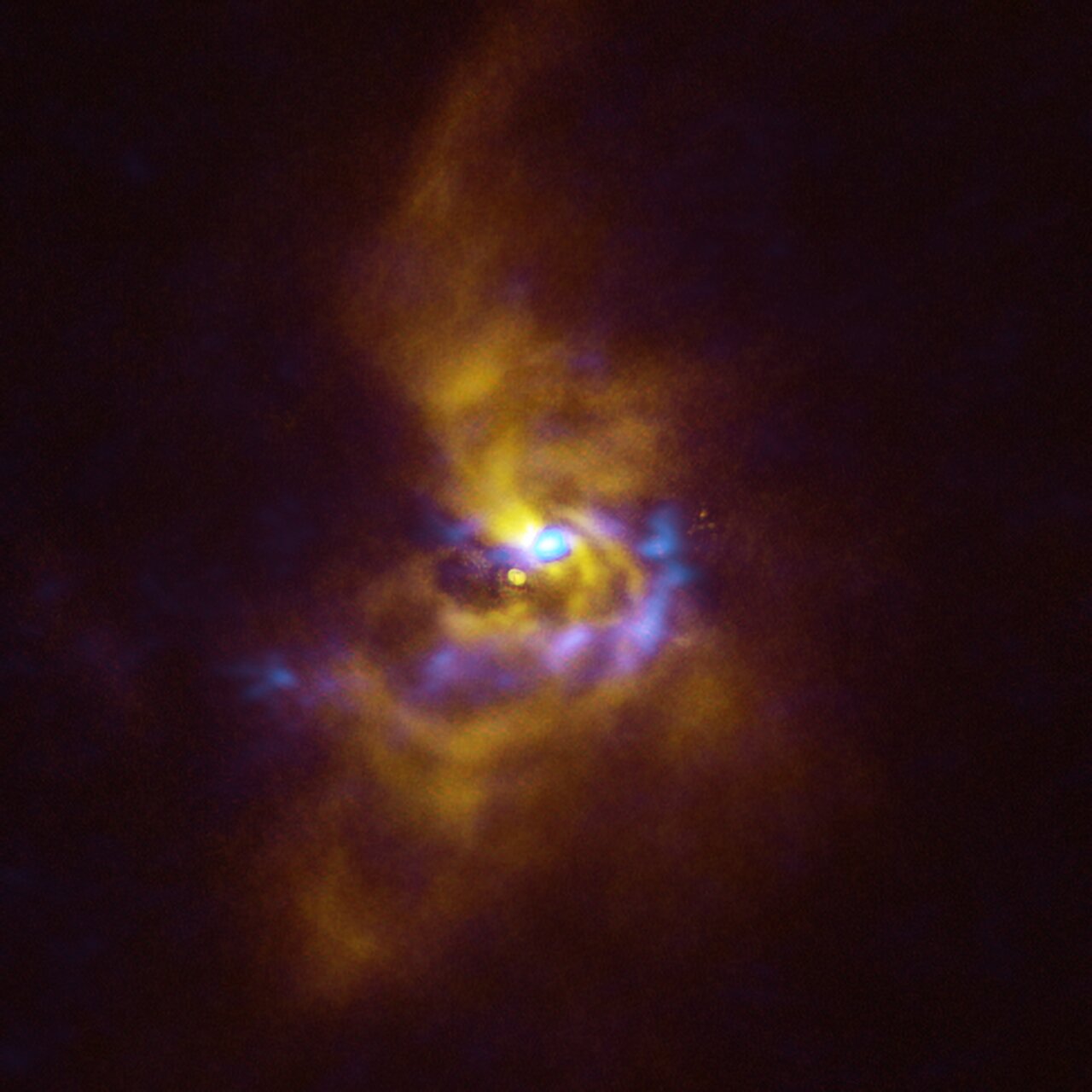
Researchers and Students of the IEA UDP among the first Chileans to lead projects with observation time at the JWST
The academic Bing Yang, the doctoral student Manuel Solimano and the postdoctoral researcher Jorge González-López in collaboration with the academic Manuel Aravena lead three initiatives that obtained access to the advanced space telescope. Likewise, the academics Alice Zurlo, Lucas Cieza, Chiara Mazzucchelli and James Jenkins will participate as co-investigators in different initiatives, as well as the doctoral student Camilo González-Ruilova.
In just the second cycle of assigning observation times at the James Webb Space Telescope (JWST) –the most modern to date, launched into space in December 2021–, three projects led by members of the Institute for the Study Astrophysicists from the Diego Portales University (IEA UDP) were selected to have access to hours of observation with said instrument. This is the first time that initiatives led from Chile obtain it.
One of them is the one whose principal investigator is IEA UDP academic Bing Yang, who will lead a project entitled “Probing Water Ice in Distant Comets: Crystalline or Amorphous?”. With the help of the observations in the JWST, the initiative seeks to characterize the water ice in a series of comets, in order to better understand the role that this element plays in the formation of planetary systems.
Meanwhile, astronomer Manuel Solimano, a PhD student in Astrophysics at Diego Portales University, will lead an initiative entitled “The LAHst of Us: A Sub-kiloparsec View Into The Origins Of a Strongly-Lensed Lyman Alpha Halo at z=3” , which will explore the origins of the gas halos known as Lyman Alpha, for which the technology and capability of the JWST would allow for an unprecedented level of detail. Manuel is the only Chilean PhD student in Astrophysics who obtained observation at the JWST as principal investigator.
For their part, postdoctoral researcher Jorge González-López and academic Manuel Aravena are leading a project entitled “Unveiling the interplay between the circumgalactic and interstellar media in a complex protocluster environment at z=4.5”, in which academic Roberto Assef will also participate, and the students Ana Posses and Manuel Solimano. The initiative seeks to take advantage of the characteristics of the JWST to study the interaction of ionized gas, the interstellar medium, and the stellar components necessary to understand feedback processes and galactic growth in distant galaxies. The data obtained will allow them to test galaxy formation scenarios, observe stellar population properties and other advances.

Likewise, academics and researchers will participate in projects led from abroad. This is the case of the astronomer Alice Zurlo, who will be co-author of the research entitled “Follow the trace: Direct detection of a dynamically ejected young planet outside a circumbinary disk”, which will seek to use the sensitivity of JWST sensors to observe, for the first time time in detail, the process that leads to the ejection of a planet from a system.
For his part, IEA UDP academic Lucas Cieza will be a co-investigator in the project “Building on ALMA: a JWST legacy survey of the chemical evolution of planet-forming disks”, which aims to systematically track the chemical evolution suffered by planetary-forming disks during his lifetime. Along with this, Cieza and the doctoral student Camilo González-Ruilova will participate in a research entitled “The volatile inventory of the terrestrial planet forming zone: a study of transport from the outer to the inner disk with JWST and ALMA” that also intends to observe planetary formation disks and exoplanets and their chemical heterogeneity.
Finally, the academic Chiara Mazzucchelli will participate as a co-author in three investigations that obtained observation time. One of them, in the area of Supermassive Black Holes and Active Galaxies, is entitled “First spatially resolved characterization of a radio-driven outflow at z~6”; another, in the area of the Intergalactic Medium and the Circumgalactic Medium, is entitled “Shedding Light on Early Structure Formation: Dissecting the Largest Gas Reservoirs of z=6.6 QSOs”. Finally, in the area of Large-Scale Structure of the Universe, he will participate in the research entitled “Mapping the Most Extreme Protoclusters in the Epoch of Reionization”. In addition, academic James Jenkins will be a co-investigator in a project that seeks to better understand the atmospheric structure of exoplanets the size of Neptune, an area where, until now, little information exists.

With these projects, the IEA UDP intends to further strengthen its contribution to research in the area, accessing observations from the largest and most advanced space telescope to date. The Institute’s director, José Luis Prieto, stated that “the discoveries being made with JWST observations are furthering our knowledge in different areas of astrophysics. It is a tremendous achievement and a source of pride that PhD students, postdoctoral researchers, and IEA scholars have obtained observation time with JWST.”
The academic added that the time allocation process “is very competitive: approximately 14% of the submitted proposals obtained time. Furthermore, this speaks highly of the quality of the institute’s researchers and puts us in a privileged situation to make discoveries and push the frontier of knowledge in astrophysics. I am very expectant of the results of the observations that these programs will carry out with JWST”.
Source: Engineering and Sciences UDP









